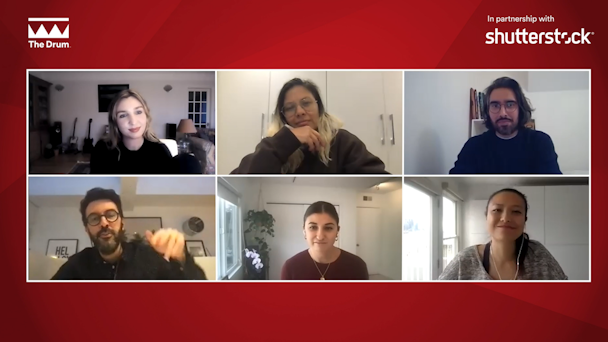Creative Trends for 2021: Brands need to tune in to culture and take note
The advertising industry is in a very different place to where it was a year ago. For the creative brains behind the brand content we consume, 2020 saw a monumental shift in the way they work; animation and CGI technology replaced physical shoots and Zoom has become the new digital office space where creative ideas are formed. Creatives across the globe have been forced to pivot, spurring a new era of innovation, ingenuity, and opportunity.

A new year brings more creativity: The key trends for 2021
Shutterstock’s 2021 Creative Trends report brought together creative minds to explore the developments, techniques, trends and technologies that will define creative expression in the year ahead.
While remote working has proven challenging in keeping team spirit alive, it has also allowed creatives to be in an environment that is welcoming to their “full selves” and has enabled more flexible, productive ways of working through new collaboration tools and technology.
“We’re actually living in the best possible time for us to be in the situation that we’re in,” said Julia Shapiro, VP, marketing, WeTransfer. “It was pretty phenomenal to see all the tools at our disposal that allowed us to communicate on all these different levels, making the execution process much easier.”
The cleverness of a story is the creativity
The participants agreed that technology has helped creative teams to connect and overcome some production issues, but Andre (Dede) Laurentino, chief creative officer, Ogilvy UK, noted that creatives risk becoming too narrow in their portrayal of the world.
“The problem is, after a year of this, you run out of the creative devices,” he said. “Yes, we need to reflect life, so this will evidently transpire into work. Suddenly your repertoire becomes very narrow because life has become very narrow. So it’s a creative process and learning curve finding ways of bypassing the narrowness of what life looks like today.”
With an increasing demand for engaging content, 2020 saw creators exploring with animation and stock content - something San Sharma, UK creative director, Wunderman Thompson believes will see creatives using more of a “hybrid approach” with these techniques in their work.
Truth is what you do when no one is looking
Culture has always defined marketing and brand marketers have a lot of power to dictate. The difference is that either brands are listening and becoming part of the cultural conversation, or they’re not, and that’s where they lose their way and get left behind.
“That’s the fine line marketers have to cross - on one hand, you want to have that authentic voice and position yourself as always doing the right thing, but you have to back up that marketing messaging with something that you’re going to do,” said Flo Lau, creative director, Shutterstock.
Brands need to think culturally about what’s happening in the world and where their service or product plays a role, and find the right cultural moment to take action, but this has got to progress from grand gestures to ongoing commitments.
“Creativity is not necessarily an ad spot,” said Leila Fataar, founder, Platform 13. “Where is the community? Where are the people? Deliver that information to them right there, that’s what they need. Creativity is going to be in what people are doing. Stop thinking like marketers and start thinking like humans in terms of creativity and interest.”
“This year forward we’ve got to hear commitments to action and I think there’s an opportunity for agencies to help those brands really galvanize consumers to help them on their mission to do practical things,” added Sharma. “Action needs to be sustainable, and it needs to be practiced.”
2021 has got to be a year of action, especially for diversity. But in driving the cultural output, there needs to be diversity in the input--not just the face of a campaign but the brains behind it.
“If the right people are on those creative teams in the input--brand and agency side -- you will have that embedded without a question about it, because that’s representative,” said Fataar.
The shift from me to we
“As agencies and brands, we need to facilitate people helping one another rather than just helping themselves,” said Sharma. “I think creativity and content will see a shift from premium to practical. We all need to work together better to make sure we can practically help people.”
Agility in creativity will be essential in moving forward in 2021, according to Lau: “We have to not plan so much and start building teams that have the ability to be agile. This is a big shift for marketers but something they are going to realize—the old waterfall process is just not working for the changing society.”
“The natural tension and correlation that exists between uncertainty, and that spurring creativity, is a really natural and human instinct, because as creatives and as humans, we want to find solutions and smarter ways to do things,” added Shapiro. “Trying to leverage that as a way to really spur creativity and culture is the best thing that we could get out of this entire experience.”
Content created with:

Shutterstock
Shutterstock is a leading global technology company offering a creative platform for high-quality assets, tools and services.
The company licenses images,...
